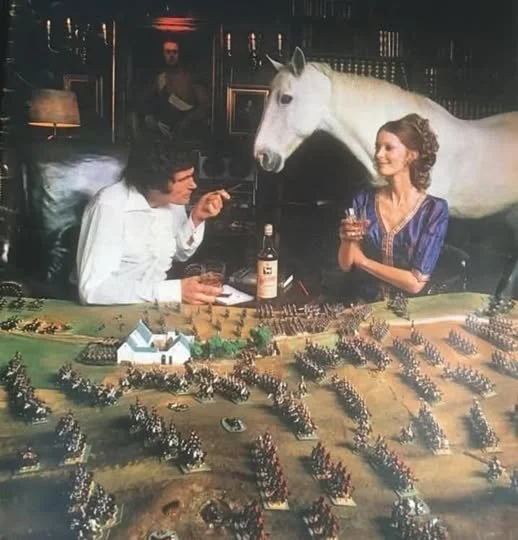TTS AAR: Warfare Game Three: Venetians Abroad versus Later Romans
/My third game at this year’s To The Strongest tournament at Warfare was against Si and his Later Romans.
This was not an encounter I was particularly looking forward to: not because Si isn’t a nice chap, quite the opposite, but because, as he was happy to remind me, although I’d beaten him a few times in friendlies, I’d never beaten him in competition, with these Later Romans often proving my Nemesis!
Looking at the table after deployment, I decided that, as with the last game, my plan had to be to take the fight to the enemy.
Two reasons for this: the first was that the Romans had deployed an isolated command of two legionary and one light units on the right who looked ripe for overwhelming with a combination of Knights and lights of my own; and second that I had to make sure that under no circumstances could I allow his veteran cavalry facing my left, including some lights that had proved very pesky in the past, through to threaten my flanks and rear.
As the game began, I therefore attempted to advance forward strongly on each wing: successfully on the left, less so on the right.
To continue the story of the right flank, I did indeed eventually engage and overwhelm the two enemy legionary units there with my Knights and lights, but the resilience of the Romans meant that even though I eventually knocked out both units, I effectively tied up just about the same amount of points to do so. Plenty of coins in due course: but a lot of time and some of my best troops used to get them!
Back to the rest of the table, where the wide gap I had left between my advancing-quickly left flank and my advancing-slowly centre had given Si an opportunity to shift troops from his centre to threaten the right flank of my left flank force (if you see what I mean!).
This was quite a crisis, only just averted my managing to get my centre forward to ZOC the Romans’ ally-cataphracts.
I then withdrew the Knights on the left flank, pulling them back two squares: something that seemed to surprise Si, presumably because he felt that two units of Knights were sufficient to take on anything he had there, and that I was therefore ceding ground unnecessarily.
Well, yes, technically perhaps so…but I had good reasons for doing so.
Firstly, I knew that I currently had an advantage in the centre and on the right, so I wanted to win those battles, reaping as many coins as possible to set me up nicely for a climactic fight on the left from a position of power.
Secondly, Si is a canny player, and I was a bit overexposed on the left (hence the cataphract crisis), with three of my units facing six of his. I’ve been caught by that before: seemingly winning the battle to suddenly find one of my flanks collapsing and losing the game before I quite realised what was going on!
Finally, I was ceding ground for time - time for my right to wipe out the legionaries there and perhaps get back into the centre to smash the Romans from the right (didn’t happen, as we’ve seen above) - and forcing the situation where, for a short time at any rate, six of his units faced empty air whilst my withdrawing Knights would hopefully contribute to the fight in the centre.
And boy, was I right to do so!
Si slammed his right-centre (facing my left) forward, and I was soon facing a major assault across my left-centre that I only managed to withstand with the help of the Knights from the left that, had I not withdrawn them, would have been stuck embroiled with Si’s veteran light cavalry somewhere up on the far left side of the table.
Luckily, by this stage, my right flank force had eventually beaten the legionaries they had chased back to the Roman baseline, giving me six coins (two units, one general) and bringing me to the edge of victory.
I must confess that I can’t remember what gave me the final coins I needed to win, but I must have broken one more of Si’s units which, combined with coins from Si successfully rallying on an even card (the boot, or rather caligulae, were on the other feet in this game: one of the reasons for my defeat in our last encounter was me losing four coins to rallying…Si lost at least two the same way this game) and the odd light killed gave me the victory.
And, when it came down to it, it was a good victory: 12-2 in my favour but, as you can see from the photos above, it was actually much more of a close-run thing than the result would suggest…at the end here I am effectively fighting with my back against the wall, enough units already disordered that my whole position could have collapsed at any moment.
So an epic game (at least from my point of view!) and one that set me right back into the running for a decent placing in the tournament as a whole.























































































































































